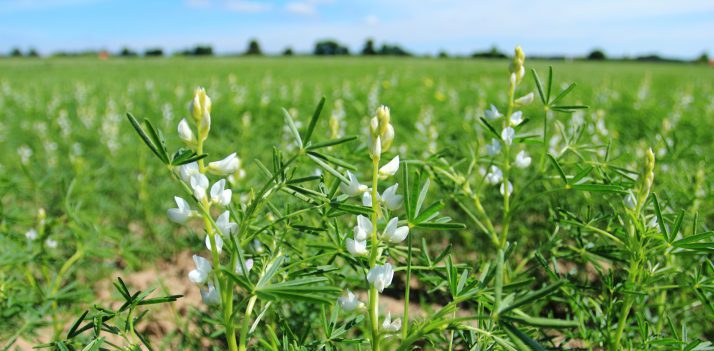Western Australian growers are being urged to harvest lupin crops as soon as they ripen to avoid grain losses from seed shedding and pod drop.
Pod drop, seed shedding, shattering of mature grain and potential for reduced seed germination (if there is rainfall after the crop matures) are key issues to be considered at this time of year in regards to lupin harvest.
By harvesting the crop when it’s ripe it can help to lower the risks of yield losses and lower grain quality stemming from these problems.
Trials completed in WA’s northern grainbelt in 2017, with GRDC investment, found that by delaying harvest weeks after crop maturity lowered average lupin yields by six per cent.
If the gap stretched out to six weeks after crop maturity, average yields were 15 per cent less than the crops harvested at maturity.
Department of Primary Industries and Regional Development (DPIRD) research officer Martin Harries led this research and said the extent of yield loss if the harvest was delayed was similar for all six lupin varieties tested, including the latest released lines.
The results from research
He said, “Many WA growers are adding lupins back into their rotations and to help with decision making, we need to generate more information about the effects of delaying harvest on yield losses and potential grain damage, especially if there is rainfall after the crop has matured.”
Harries continues to add, “The best harvesting window for lupin across WA’s grainbelt is typically within three weeks of crop maturity and as soon as grain moisture content reaches 14pc, which is the maximum allowable moisture level to meet CH Group receival standards. Delaying harvest can cause seed and pods to drop and/or lead to brittle grain that is susceptible to cracking and splitting.”
Six lupin varieties at three harvest times, ranging from crop maturity to six weeks after maturity, were investigated last year by DPIRD at Eradu, near Geraldton.
Overall, average yields of the newer varieties across all harvest times were up to 0.5 tonnes per hectare (26pc) higher than the 2.5t/ha average yield across all varieties and harvest times.
A two-week delay in harvest after crop maturity resulted in an average of 0.04t/ha (6pc yield loss across all varieties).
Delaying harvest by six weeks after the crop ripened caused a greater drop of 0.3t/ha (15pc in average yields).
Mr Harries explained, “All varieties had average yield losses between 12 and 15pc if the harvest was delayed after the crop ripened, compared to if they had been harvested at maturity.”
Source: Farm Weekly



